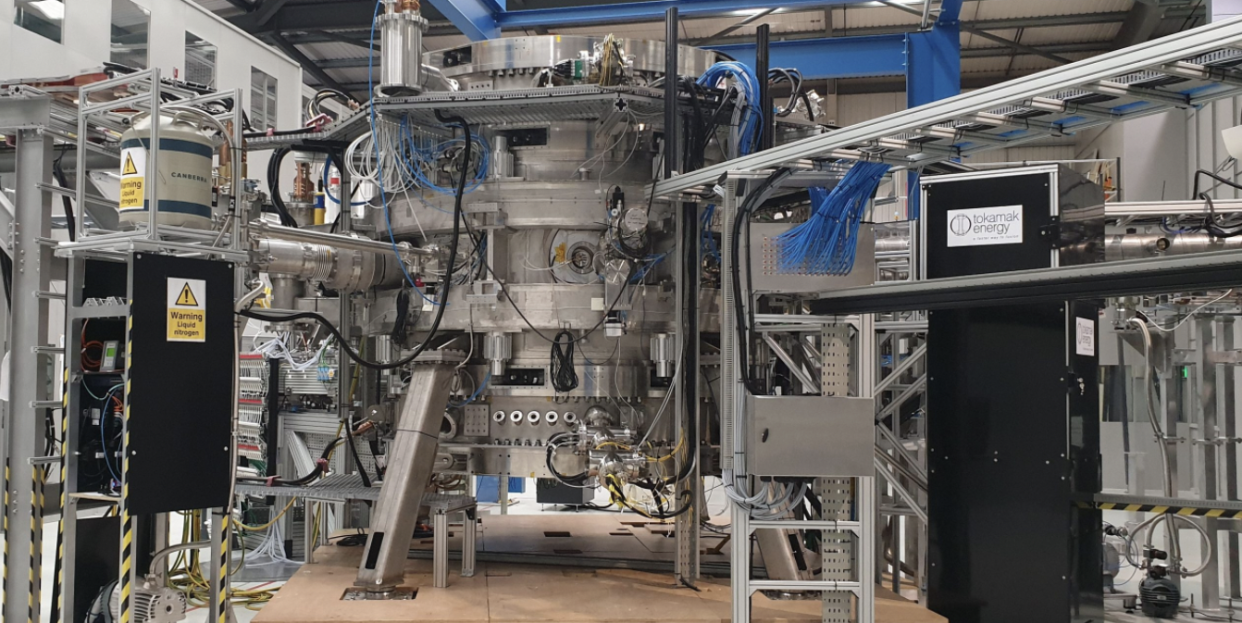This Compact Tokamak Is on the Verge of Commercial Energy Production

A compact nuclear fusion reactor has reached 100 million degrees Celsius.
Its makers say this represents the threshold of energy production for this reactor.
The design is streamlined with thoughtful design and high-temperature magnets.
A privately-owned tokamak in the United Kingdom has reportedly achieved ignition temperature for nuclear fusion, meaning the reactor has reached the threshold for commercial energy production.
Tokamak Energy, an amusingly hard-to-Google company based in Oxford in the south of England, has been working on tokamak reactors since 2009. Even before that, the group was founded as part of England’s national Culham Centre for Fusion Energy, with decades of history as part of the world’s nuclear fusion research efforts. (Private companies like Tokamak Energy, which spin off of research facilities housed at universities or as part of government programs, are surprisingly common. One battery researcher tells Popular Mechanics that the reason is simple: students and public funds should be doing new research, not slogging through the long road of research and development on an emerging commercial product.)
⚡️ You love energy. So do we. Let’s nerd out over it together.
A tokamak is a donut-shaped—or, in this case, spherical—nuclear fusion reactor in which swirling plasma is brought to millions of degrees in temperature in order to begin, well, fusing. The goal is to smash nuclei together and generate energy. Tokamak Energy’s research centers on the ST40 reactor, a spherical tokamak that has made test runs on its way toward the productive ratio known as “ignition” in the field of nuclear fusion. Ignition refers to the point at which the energy produced by a fusion reactor is greater than the amount required to kickstart it up to millions of degrees. In other words: it’s a very, very high barrier.
Publicly-funded reactors like the massive donut-shaped tokamak at ITER in France have set records of 100 degrees Celsius before. But Tokamak Energy’s reactor, which it says has cost a total of $70 million to date, is much smaller than ITER’s, which has cost billions of dollars. The Tokamak Energy reactor assembly is maybe the height of two average-seeming human men, as shown in a corporate video (embedded at the top of this story). In contrast—a phrase that feels underwhelming for the purpose—ITER’s tokamak assembly will weigh 23,000 tons.
The size difference is part of what lowers the energy threshold. ITER will need to reach 150 million degrees Celsius, a 50 percent higher temperature than what Tokamak Energy says it needs. To make a smaller reactor, almost everything in the tokamak is refined to become more streamlined, from the shape itself to the closer placement of the smaller magnets. The tokamak also uses less energy because it relies on “warmer” (relatively speaking) superconducting magnets that can be cooled with liquid nitrogen instead of costlier liquid helium.
Despite their landmark temperature achievement, the timeline for Tokamak Energy is still on par with those of other projects: its reactor will begin generating commercial power sometime in the 2030s. Tokamak Energy’s CEO says the combination of the sleeker spherical design and the high-temperature superconducting magnets are “the optimal route to achieving clean and low-cost commercial fusion energy,” New Atlas reports. From there, Tokamak Energy hopes to make modular fusion reactors the same way companies are chasing modular fission reactors today.
You Might Also Like

